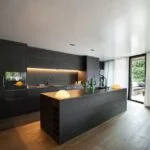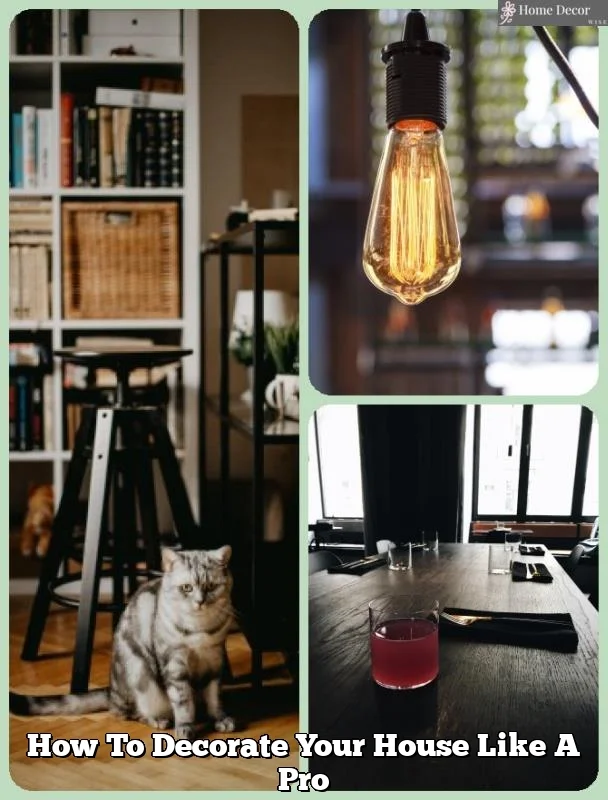Are you looking to infuse your home with the glamour and sophistication of the 1920s era? Discover how to decorate a 1920s home and bring the opulence of this iconic period into your living space. From the influence of the Art Deco movement to the bold color palettes and luxurious materials, embracing the aesthetic of the Roaring Twenties is a timeless way to create an elegant and sophisticated atmosphere in your home.
The 1920s was a time of unprecedented change, marked by cultural and artistic revolutions that significantly impacted interior design. Influenced by the Art Deco movement, 1920s home decor is characterized by sleek lines, geometric patterns, and an emphasis on luxury and opulence. In this article, we will explore the history and aesthetic of 1920s home decor, providing insights into how you can incorporate these timeless styles into your own living space.
From bold color palettes to iconic furniture styles, we will delve into the key elements that defined 1920s home decor. By understanding the popular color schemes, furniture designs, art deco influence, lighting choices, flooring options, and entertaining spaces of this era, you can effectively bring together all these elements to create an elegant and luxurious environment in your modern-day home.
Whether you are a fan of vintage glamour or simply appreciate timeless design trends, decorating your home with a nod to the 1920s will surely make a lasting impression.
Color Palette
The 1920s marked a shift from the heavy, ornate décor of the Victorian era to a more modern and glamorous aesthetic. One of the key elements of 1920s home decor is the use of a bold and vibrant color palette. Emerald green, royal blue, and rich burgundy were popular choices during this time, along with metallic accents and sharp black and white contrast. These colors added depth and drama to interior spaces, creating an atmosphere of luxury and sophistication.
To achieve an authentic 1920s look in your home, consider incorporating these popular color schemes into your design:
- Emerald Green: This rich and luxurious hue was a favorite in 1920s home decor, often used in upholstery fabrics, wall coverings, and accessories. Consider adding emerald green accent pieces like throw pillows or curtains to infuse your space with a touch of old-world glamour.
- Royal Blue: Bold and regal, royal blue was another popular color choice in 1920s interiors. Incorporate this color into your home through statement furniture pieces like velvet sofas or armchairs, or opt for royal blue rugs or artwork to make a striking visual impact.
- Rich Burgundy: Deep red tones like burgundy were also prevalent in 1920s home decor. Consider painting an accent wall in this dramatic shade or adding burgundy accessories like vases or decorative pillows to infuse warmth and richness into your space.
- Metallic Accents: To add a touch of Art Deco opulence to your home, incorporate metallic accents like gold, silver, or brass. Look for accessories with sleek metallic finishes such as mirrors, picture frames, or lighting fixtures to capture the glamorous spirit of the Roaring Twenties.
In addition to these bold hues and metallic touches, don’t forget the importance of black and white contrast in 1920s home decor. Sharp contrasts were commonly used to create visual interest and depth in interior spaces. Whether through geometric patterns on rugs or tiled floors or through artwork and decorative items in varying shades of black and white, incorporating this high contrast look is essential for achieving an authentic 1920s aesthetic.
By embracing these popular color schemes from the 1920s and incorporating them into your own modern-day home design, you can create a space that exudes the elegance and glamour of the Roaring Twenties while still feeling fresh and contemporary. With careful consideration of color choices and how they complement each other within each room, you can effortlessly capture the essence of 1920s style while making it work seamlessly within your personal living space.
Furniture & Accessories
The 1920s was a time of dramatic change and innovation in the world of home decor. The era saw a shift towards more modern and luxurious designs, influenced by the Art Deco movement and the lavish lifestyle of the Roaring Twenties. When it comes to furniture and accessories, 1920s home decor is characterized by sleek and streamlined pieces, bold geometric patterns, mirrored surfaces, and luxurious textiles like velvet and silk.
Iconic Furniture Styles
One of the most iconic furniture styles of the 1920s is the Art Deco furniture, which is characterized by its sleek lines, geometric shapes, and luxurious materials. Pieces like chaise lounges with curved silhouettes, angular armchairs with bold upholstery, and streamlined sofas in rich velvet or silk were all popular choices during this era. Additionally, mirrored surfaces were used on furniture pieces like coffee tables and cabinets to add a touch of glamour to the space.
Luxurious Textiles
In terms of textiles, plush velvet and silky satin were prevalent in 1920s home decor. These sumptuous fabrics added a sense of luxury and opulence to interiors. Velvet sofas and chairs in deep jewel tones such as emerald green or royal blue were coveted items in any fashionable 1920s home. Silk draperies with intricate patterns also adorned windows, adding an air of sophistication to living spaces.
Geometric Patterns
Geometric patterns played a significant role in 1920s home decor, from upholstery fabrics to decorative accents. Bold chevron designs, angular zigzags, and symmetrical motifs adorned everything from rugs to throw pillows. These graphic patterns added visual interest to rooms while reflecting the modern sensibility of the era.
When learning how to decorate a 1920s home today, incorporating these iconic furniture styles and accessories can help create an authentic Art Deco ambiance that pays homage to the elegance and glamour of this influential period in interior design history.
Art Deco Influence
The Art Deco movement had a significant impact on 1920s home decor, influencing everything from furniture and accessories to architectural design. One of the key elements of Art Deco is its use of geometric shapes and patterns, which can be seen in everything from wallpaper to textiles to the design of furniture. The use of angular lines and bold, symmetrical patterns creates a sense of modernity and sophistication that defined the era.
In addition to geometric shapes, Art Deco also incorporated luxurious materials such as marble and brass. These materials were used to create elegant and opulent pieces of furniture and decor, adding a sense of glamour to the home. Marble was often used for tabletops and sculptures, while brass was used for lighting fixtures, decorative accents, and hardware on furniture.
Furthermore, the incorporation of Egyptian and Asian motifs was another hallmark of the Art Deco style in 1920s home decor. The discovery of King Tutankhamun’s tomb in 1922 sparked a fascination with Egyptian art and culture, leading to an influx of Egyptian-inspired motifs in home decor. Additionally, the increased globalization during this time period led to a growing interest in Asian art and design, influencing everything from furniture shapes to decorative motifs.
To incorporate these Art Deco influences into your own 1920s-themed home decor, consider adding geometric patterned rugs or wallpaper, incorporating marble or brass accents into your furnishings or choosing decorative objects that feature Egyptian or Asian-inspired designs.
Lighting
The 1920s was a time of opulence and grandeur, and lighting played a crucial role in creating the glamorous atmosphere that was characteristic of this era. When looking to decorate a 1920s home, it’s essential to pay attention to the lighting fixtures and design elements that can enhance the overall aesthetic.
Chandeliers were a popular choice during this period, adding an air of elegance and sophistication to any room. Whether adorned with crystal prisms or boasting geometric patterns, chandeliers were often the focal point of the space, making a bold statement.
In addition to chandeliers, sconces and table lamps were also widely used in 1920s home decor. Sconces provided ambient lighting while adding a touch of architectural interest to walls. Table lamps were not just functional but also served as decorative pieces in their own right, often featuring art deco-inspired designs that complemented the overall decor of the room. The use of these varied lighting sources allowed for an illuminated atmosphere that radiated luxury and style.
One key aspect to keep in mind when decorating a 1920s home is the importance of layering light. Various light sources such as overhead chandeliers, wall sconces, and table lamps should work together harmoniously to create a warm and inviting ambiance.
By strategically placing lighting fixtures throughout the space, you can highlight key design elements, emphasize textures, and create visual interest. This layered approach not only adds depth to the decor but also reflects the lavish nature of 1920s interior design.
| Lighting Fixture | Function |
|---|---|
| Chandeliers | Add an air of elegance and sophistication; serve as focal point |
| Sconces | Provide ambient lighting; add architectural interest |
| Table Lamps | Serve both functional and decorative purposes; complement overall decor |
Flooring & Wall Coverings
Incorporating the right flooring and wall coverings is essential when decorating a 1920s home. The choices made in these areas can greatly impact the overall aesthetic and ambiance of the space, making it crucial to understand the popular options from that era.
Popular Flooring Options
One of the most prevalent flooring materials in 1920s homes was hardwood. Oak, maple, and mahogany were commonly used to create exquisite, high-quality floors that exuded elegance and sophistication. In addition to hardwood, terrazzo was another popular choice for its durability and timeless appeal.
Featuring a mixture of marble, quartz, granite, or glass chips set in concrete, terrazzo flooring added a touch of luxury to 1920s homes. Lastly, patterned tiles were also favored for their ability to bring visual interest and personality to a space. Geometric shapes and bold colors contributed to the vibrant energy of 1920s interiors.
Wall Coverings for Depth and Dimension
When it comes to wall coverings in a 1920s home, wallpaper was king. Intricate patterns and art deco-inspired designs graced the walls of these residences, adding depth and dimension to the rooms.
Whether it was geometric shapes, stylized florals, or metallic accents, wallpaper played a significant role in creating the luxurious atmosphere typical of homes from this era. In addition to traditional wallpaper, art deco-inspired wall coverings made from materials like grasscloth or textured fabrics offered an alternative way to introduce texture and opulence into interior spaces.
In considering how to decorate a 1920s home regarding flooring and wall coverings today, homeowners should seek out modern equivalents inspired by these historical design elements. Replicating the look of hardwood with engineered wood or luxury vinyl plank flooring can offer durability while still capturing the warmth of classic hardwood floors.
Additionally, choosing wallpapers with art deco motifs or patterned tiles reminiscent of those found in 1920s homes can bring an authentic touch of vintage glamour into contemporary living spaces while paying homage to this iconic design era.
By giving attention to detail with regard to flooring materials and wall coverings that encapsulate the essence of 1920s home decor style, individuals are sure to recreate an atmosphere that reflects the opulence and sophistication characteristic of this vibrant period in history.
Entertaining Spaces
The living and dining areas in a 1920s home were designed to exude elegance and sophistication, creating a perfect environment for entertaining guests. To achieve this aesthetic in your own home, it’s essential to pay attention to key elements of 1920s home decor, from furniture and accessories to color palettes and lighting. Here are some tips on how to decorate the living and dining areas in a 1920s home to capture the essence of the era.
First and foremost, when decorating the living and dining areas in a 1920s home, it’s important to focus on furniture that embraces the sleek and streamlined aesthetic that was popular during the Roaring Twenties. Look for sofas and armchairs with angular silhouettes, as well as tables with geometric patterns and mirrored surfaces. Incorporating luxurious textiles like velvet and silk can also add a touch of opulence to these spaces.
In terms of color palette, consider using bold and vibrant hues such as emerald green, royal blue, and rich burgundy to create an impactful visual statement in the living and dining areas. Additionally, incorporating metallic accents such as brass or gold can elevate the overall look while adding a touch of glamour. Black and white contrast can also be used to create a striking visual effect that is characteristic of 1920s home decor.
When it comes to lighting, opt for opulent chandeliers as they were a staple in 1920s homes. Sconces and table lamps can also be strategically placed throughout these spaces to create an illuminated atmosphere that exudes sophistication. By paying attention to these key elements of 1920s home decor, you can effectively decorate the living and dining areas in your home to capture the elegant essence of the era.
Bringing It All Together
When it comes to decorating a 1920s home, it’s essential to effectively combine the different elements of this timeless style to create a cohesive and elegant living space. One of the key tips for bringing it all together is to focus on incorporating the iconic color palette of the era.
Consider using bold and vibrant hues like emerald green, royal blue, and rich burgundy as accent colors in your decor, while maintaining a base of black and white contrast with metallic accents to capture the essence of 1920s home decor.
In addition to the color palette, furniture and accessories play a crucial role in capturing the aesthetic of a 1920s home. Look for sleek and streamlined sofas with geometric patterns, mirrored surfaces, and luxurious textiles like velvet and silk to add a touch of glamour to your space. Incorporating Art Deco-inspired accessories such as decorative vases, geometric sculptures, and beveled mirrors can also enhance the overall ambiance of a 1920s-inspired interior.
To effectively bring together the different elements of 1920s home decor into a modern-day home, consider paying attention to lighting and how it can create a glamorous atmosphere. Embrace elegant chandeliers as statement pieces in your living spaces, use sconces and table lamps strategically to highlight architectural details or artwork, and ensure that lighting fixtures feature design elements reminiscent of Art Deco influence such as geometric shapes or metallic finishes.
By consciously incorporating these key elements – color palette, furniture & accessories, lighting – you can successfully bring together the different aspects of 1920s home decor while seamlessly integrating this timeless style into a modern-day home. Whether you’re aiming for full-scale Art Deco glamor or simply looking to incorporate subtle nods to the Roaring Twenties era, embracing these tips will help you achieve an elegantly sophisticated space inspired by 1920s home decor.
Conclusion
In conclusion, decorating a 1920s home allows you to immerse yourself in the luxurious and glamorous aesthetic of the Roaring Twenties era. The influence of Art Deco is evident in every aspect of 1920s home decor, from the color palette to the furniture and accessories.
By embracing bold and vibrant colors like emerald green, royal blue, and rich burgundy, incorporating geometric patterns and luxurious textiles such as velvet and silk, and investing in opulent lighting fixtures like chandeliers and sconces, you can truly capture the essence of 1920s sophistication in your own living spaces.
When it comes to flooring and wall coverings, consider options like hardwood, terrazzo, patterned tiles, and art deco-inspired wallpapers to add depth and dimension to your home. And don’t forget about the iconic furniture styles of the 1920s – think sleek and streamlined sofas, mirrored surfaces, and luxurious materials like marble and brass. By carefully combining these different elements of 1920s home decor, you can create a space that exudes elegance and charm.
Incorporating the timeless styles of a 1920s home into a modern-day living space is all about finding a balance between vintage glamour and contemporary functionality. Whether it’s through collecting vintage pieces or investing in modern reproductions inspired by the era, there are plenty of ways to infuse your home with the allure of the Roaring Twenties.
Embracing 1920s home decor is not just about decorating – it’s about creating an atmosphere that reflects an era marked by opulence, innovation, and style. So go ahead – transport yourself back in time by bringing the glamour of the 1920s into your own home today.
Frequently Asked Questions
How Did People Decorate Their Homes in the 1920s?
In the 1920s, people decorated their homes with a mix of traditional and modern styles. This included using bold geometric patterns, art deco designs, and vibrant colors like turquoise, pink, and gold to create a lively and glamorous atmosphere.
What Decor Style Is 1920s?
The decor style of the 1920s is often referred to as Art Deco. This style is characterized by its use of bold geometric shapes, luxurious materials like glass and chrome, and strong color contrasts. It emphasizes glamour, luxury, and modernity in design.
What Were the Features of the 1920s House?
The features of a 1920s house typically included a compact layout with smaller rooms compared to houses today. These homes often featured architectural details such as arched doorways, crown molding, and intricate tile work. Many 1920s houses also had built-in cabinetry and cozy fireplace nooks to add charm to the living spaces.

I’m thrilled to be your companion on this exciting journey through the world of home decor and design. With a passion for turning houses into homes and a keen eye for the finer details, I’m here to help you transform your living spaces into beautiful, functional, and meaningful havens.





